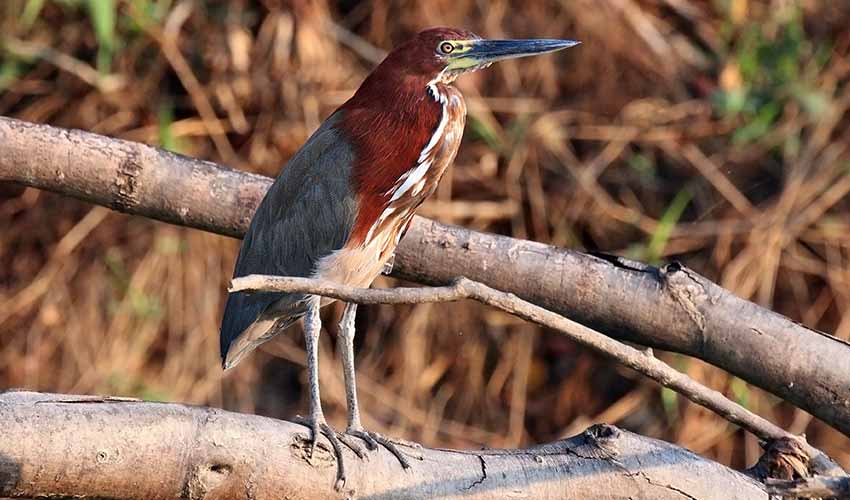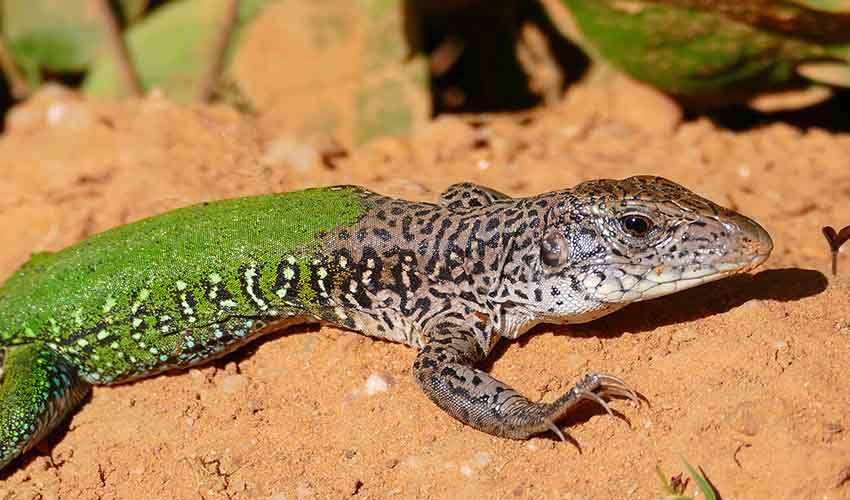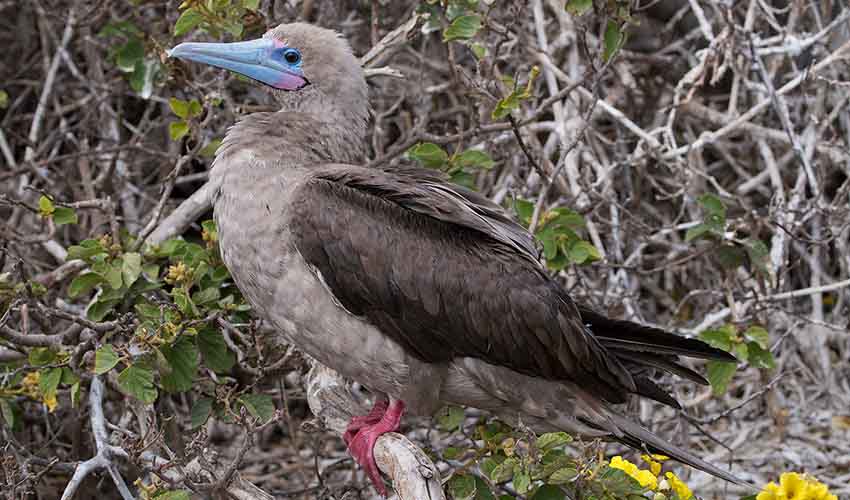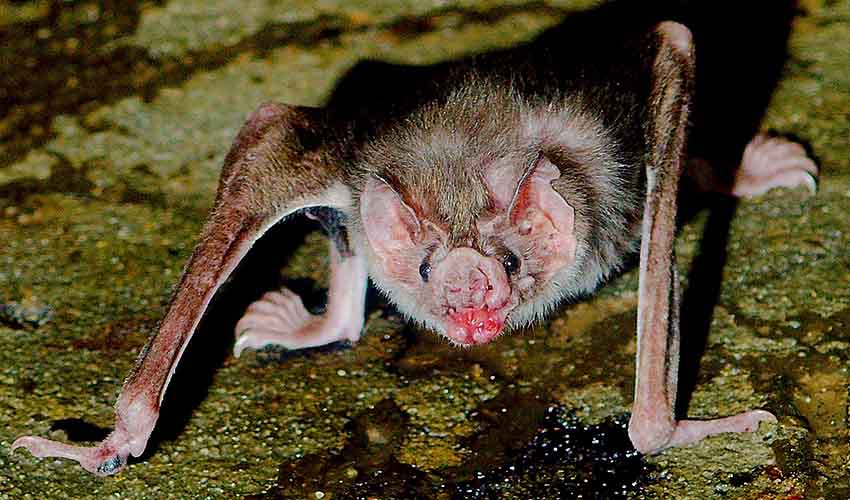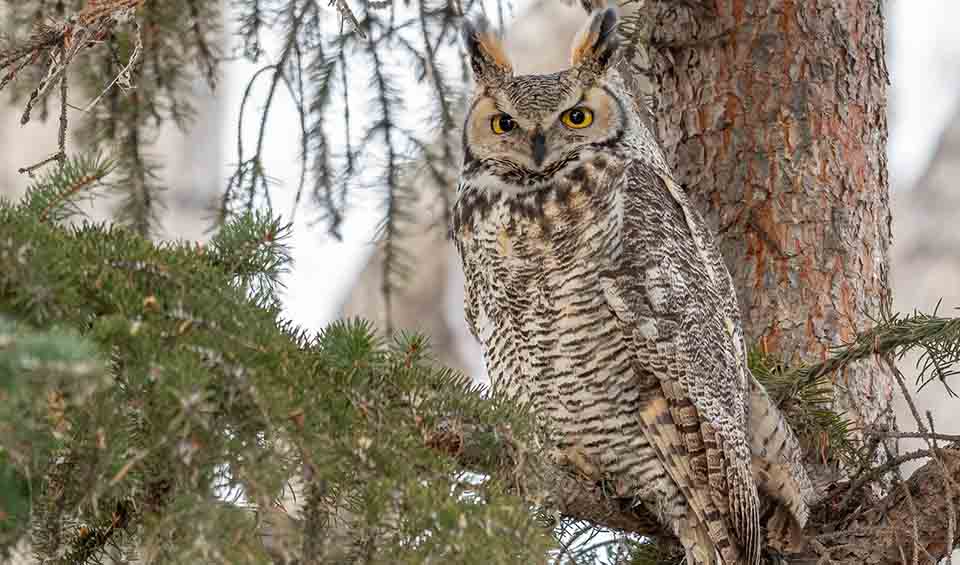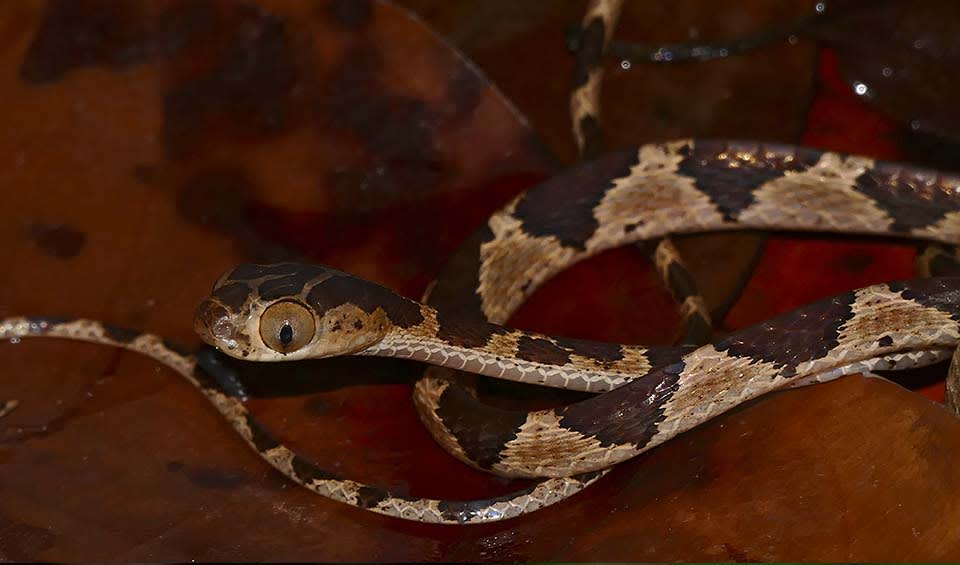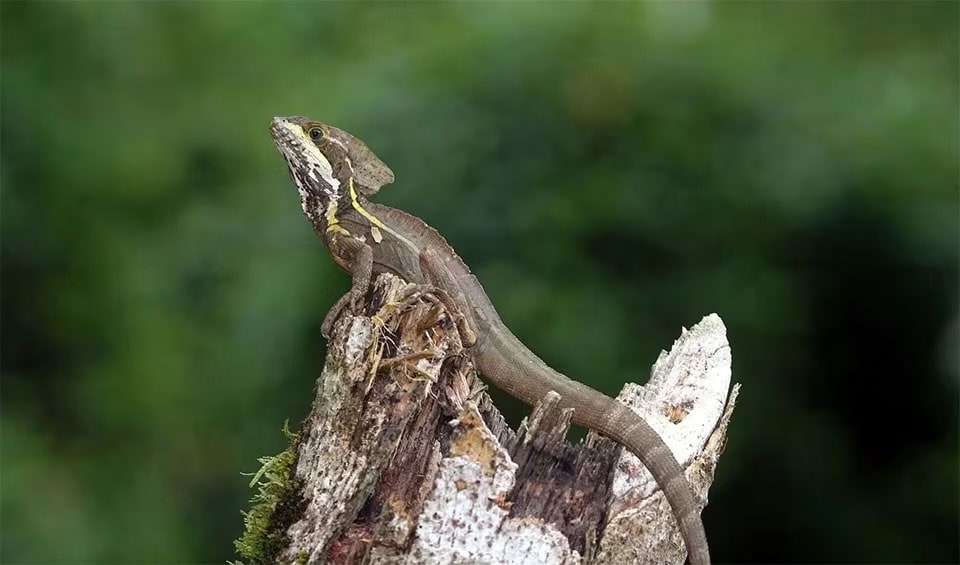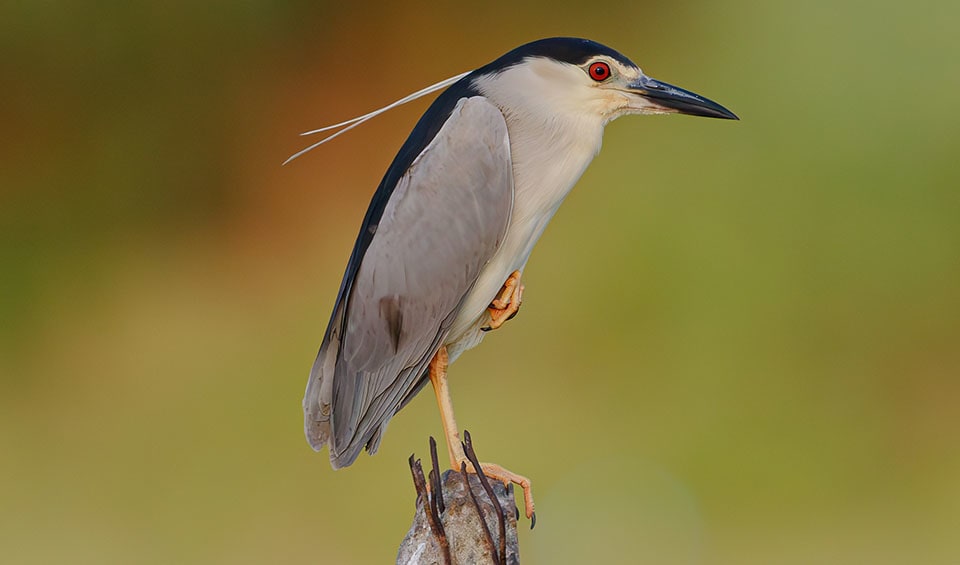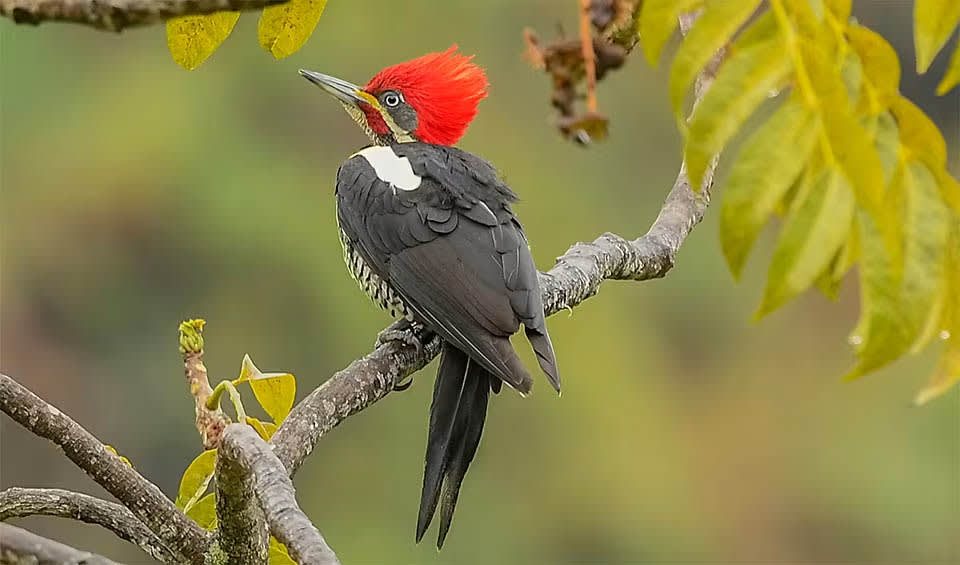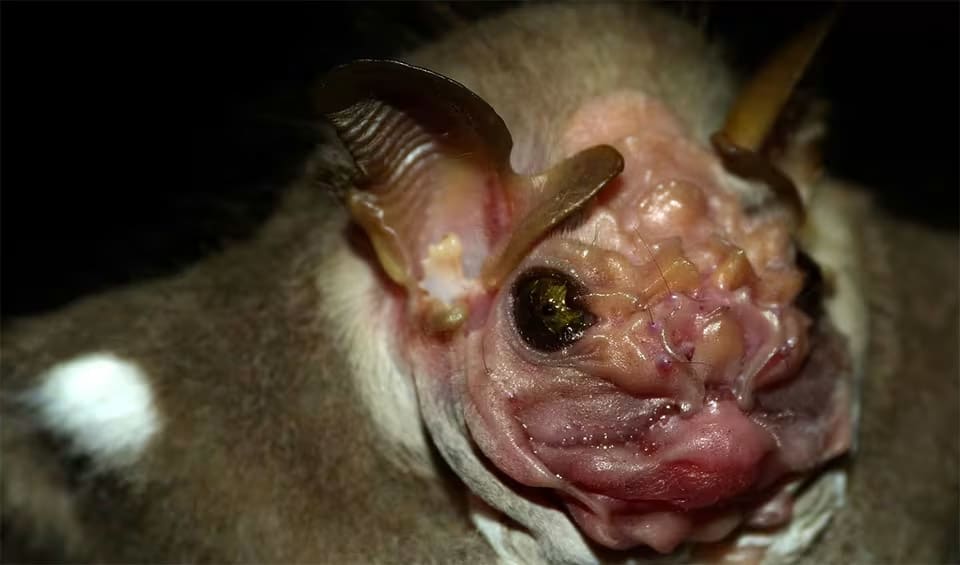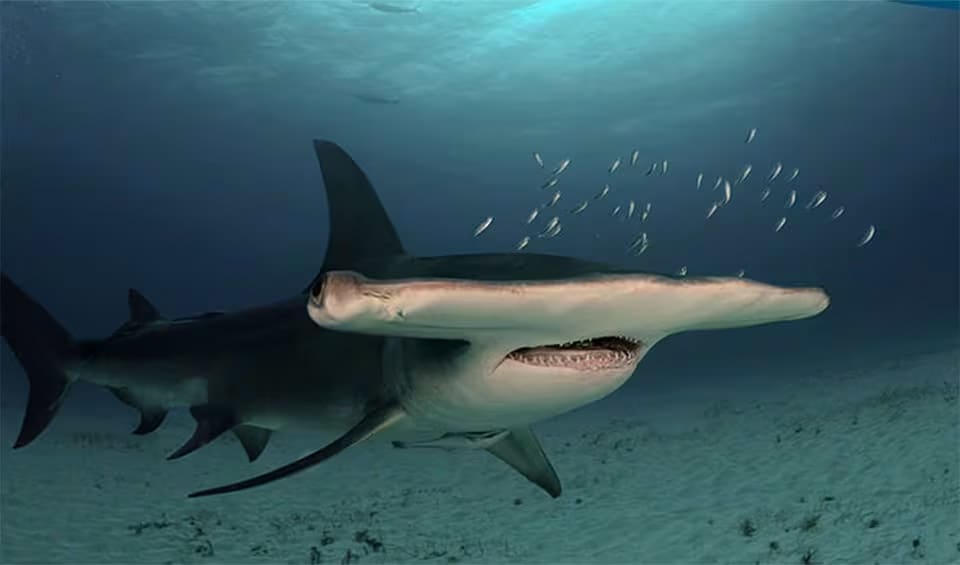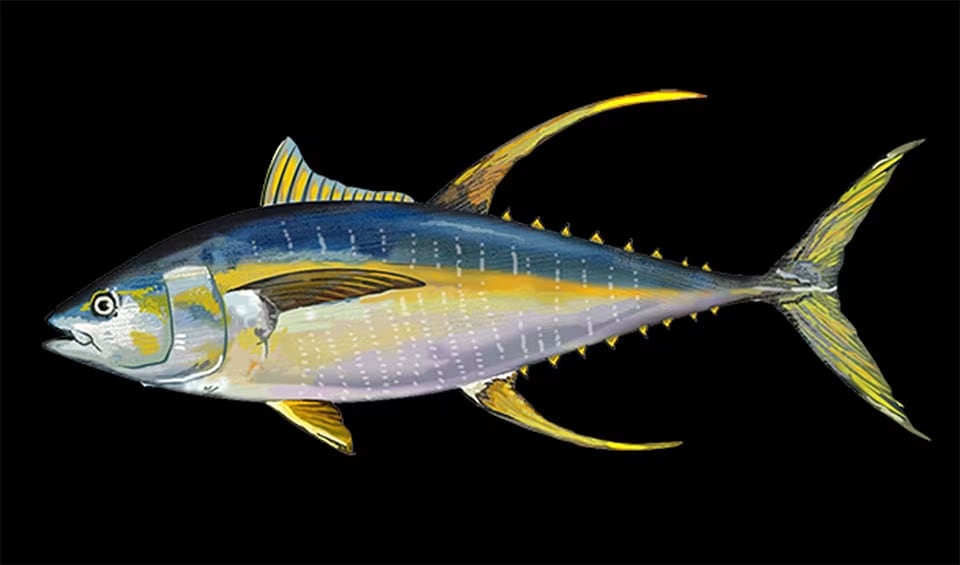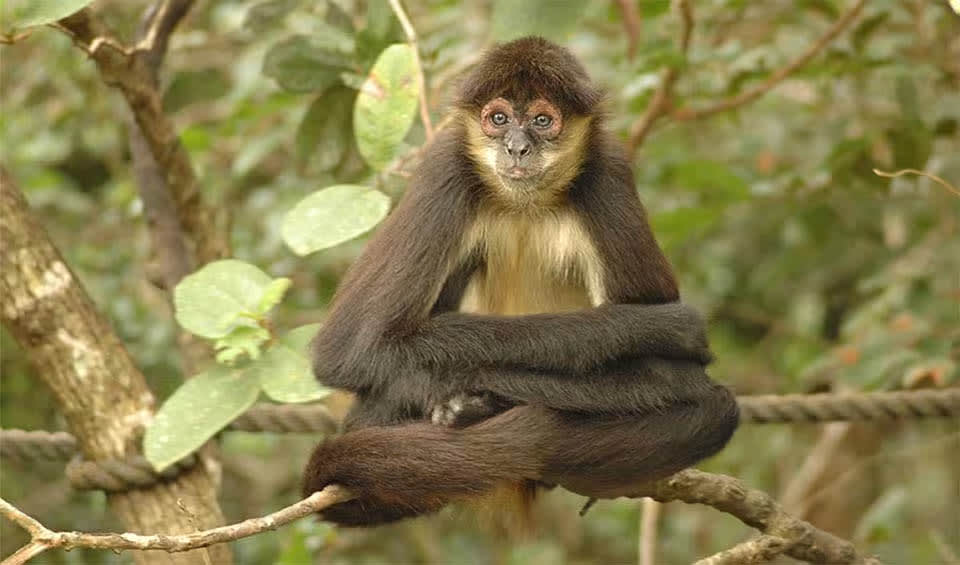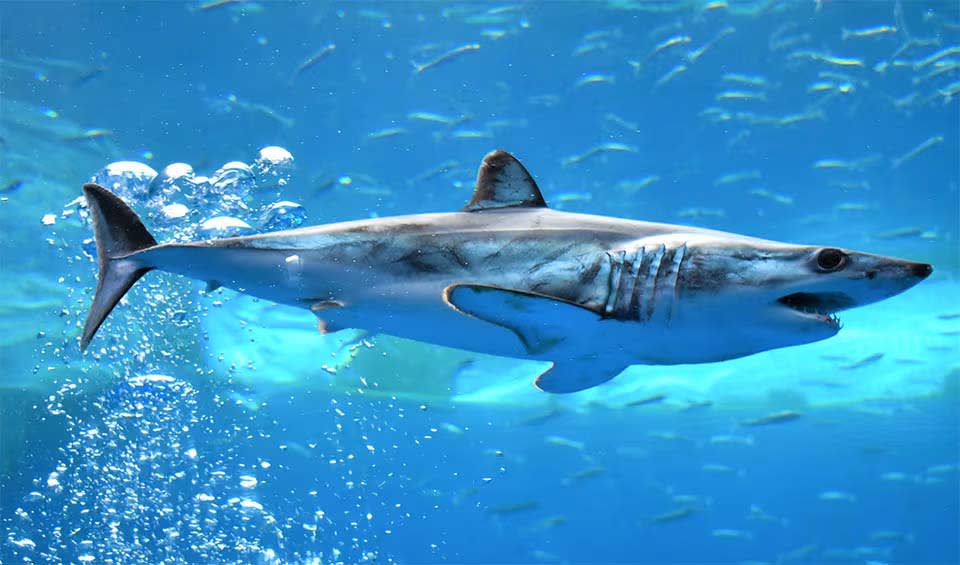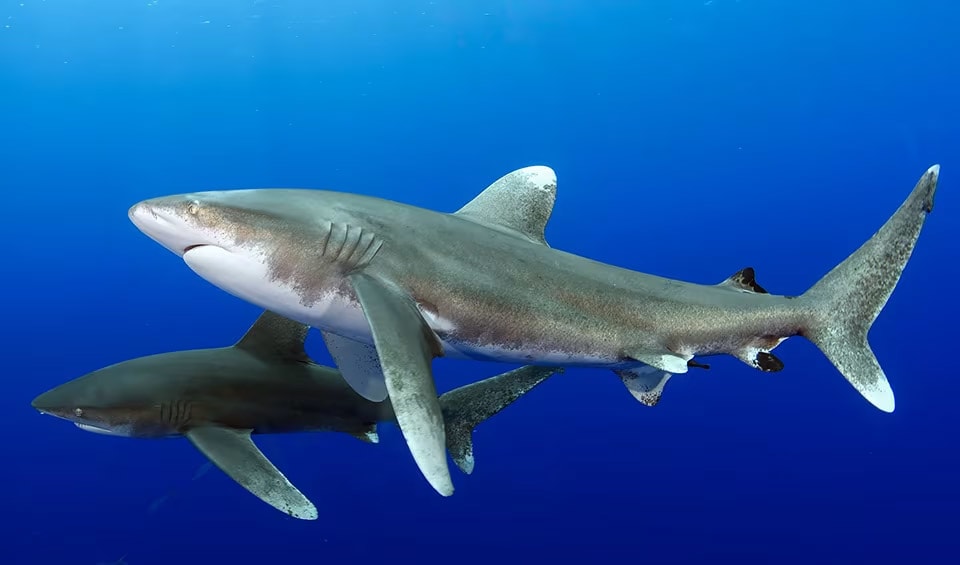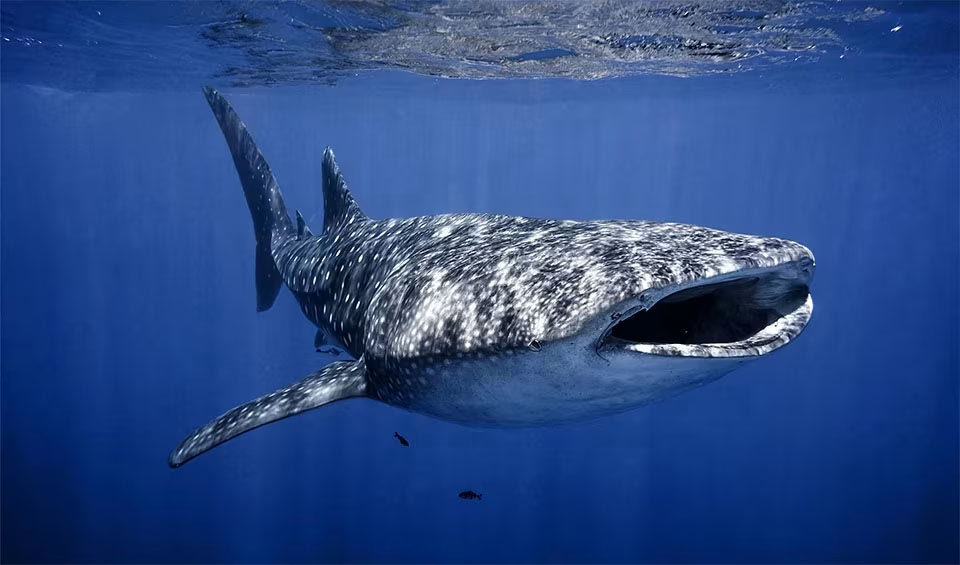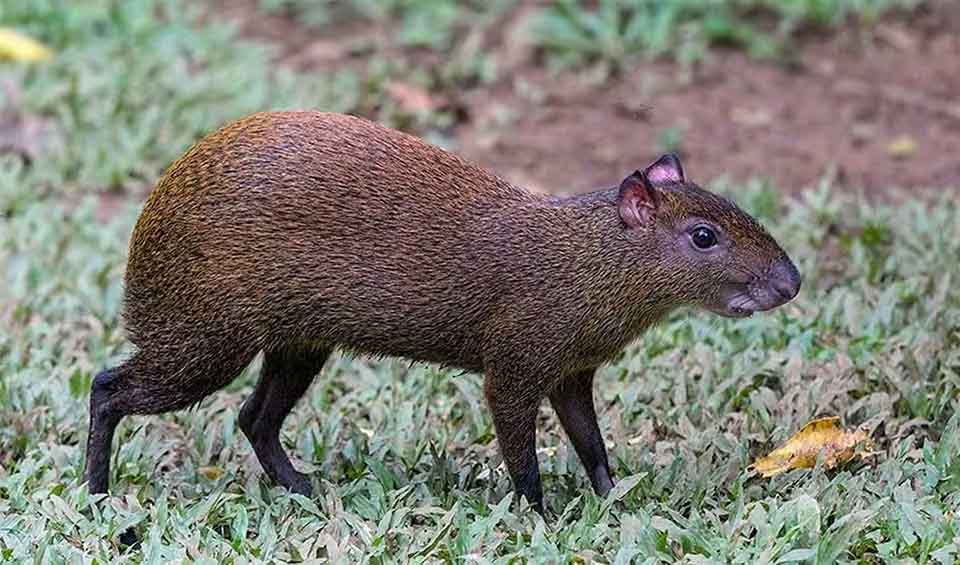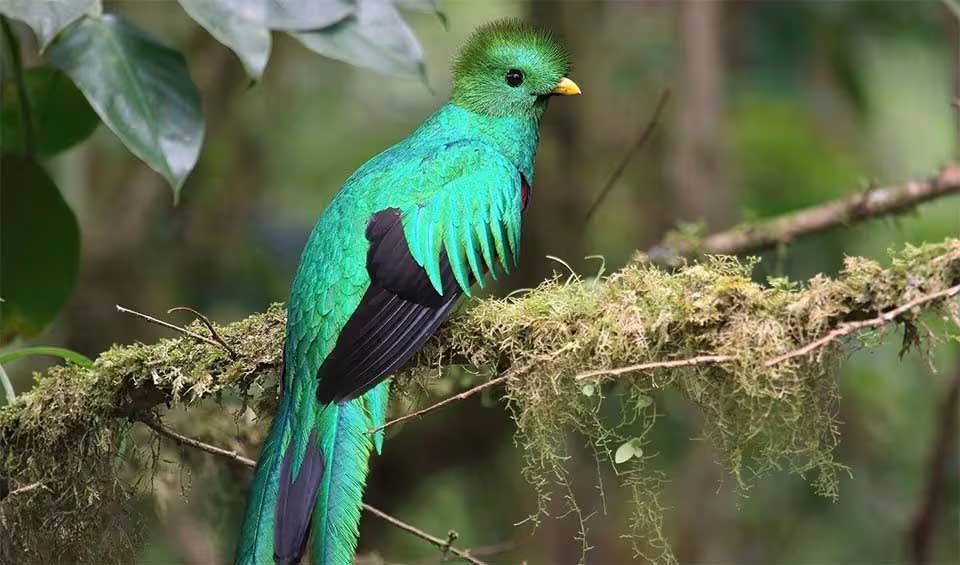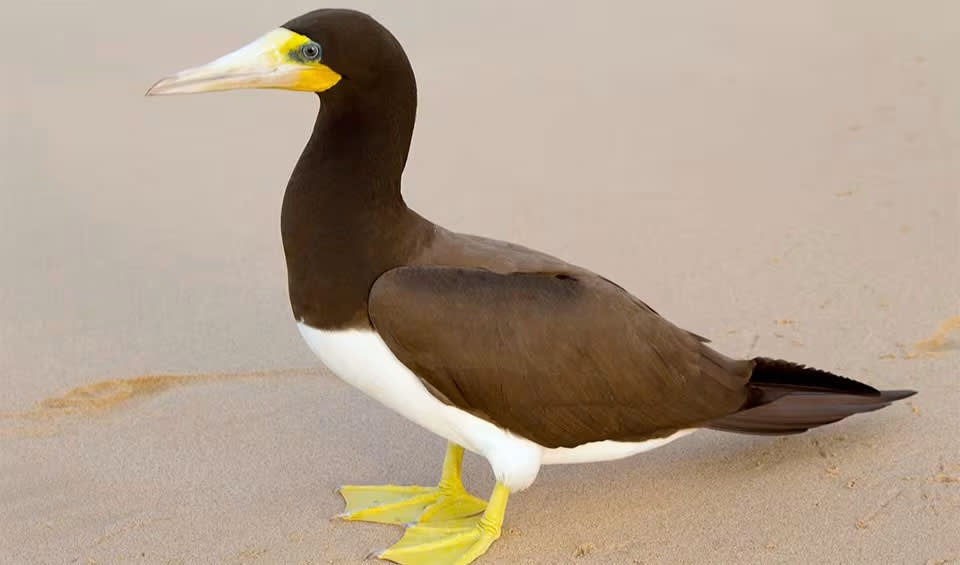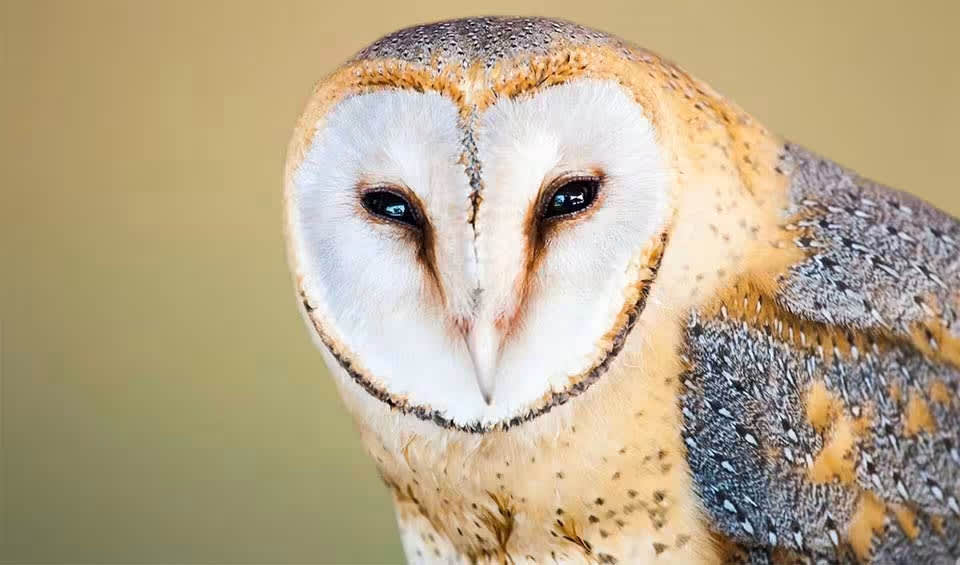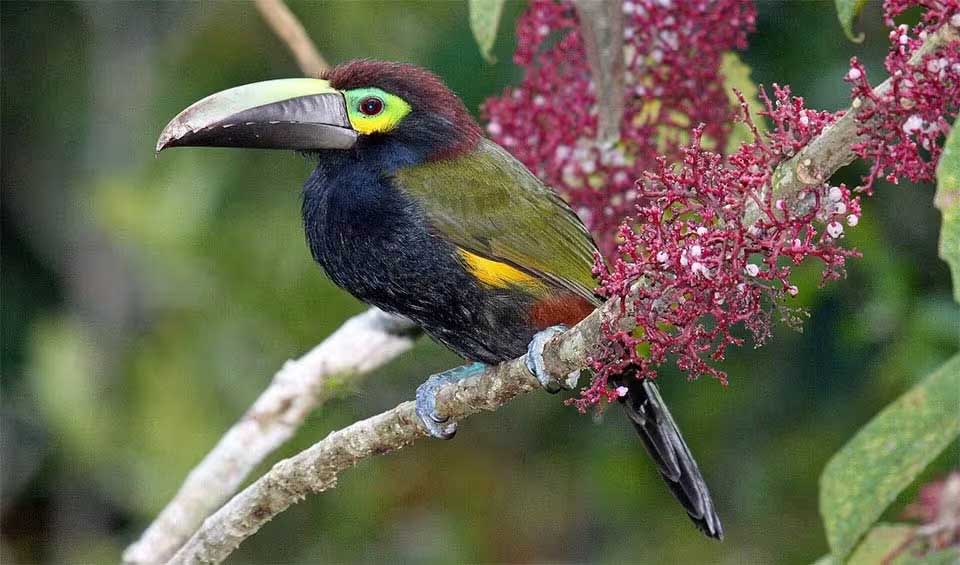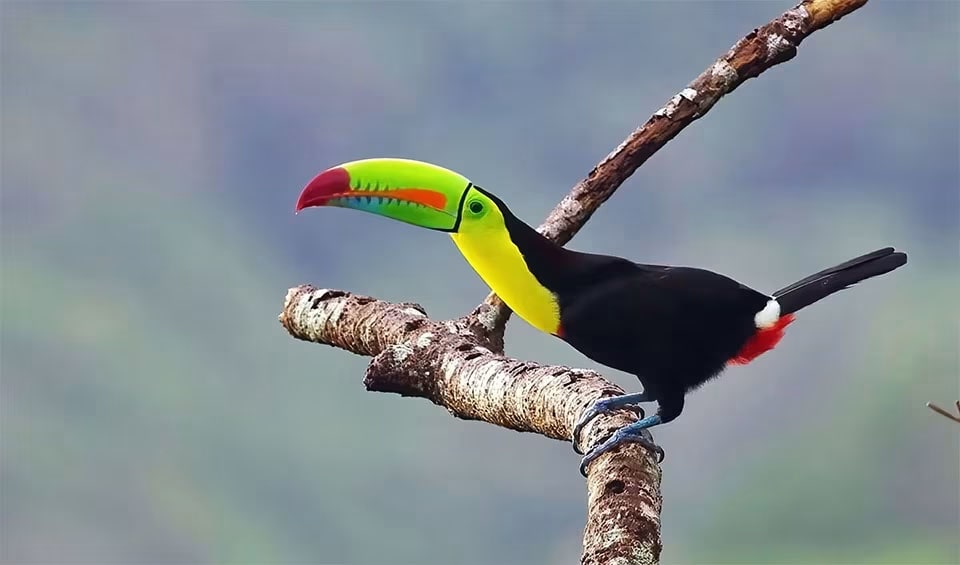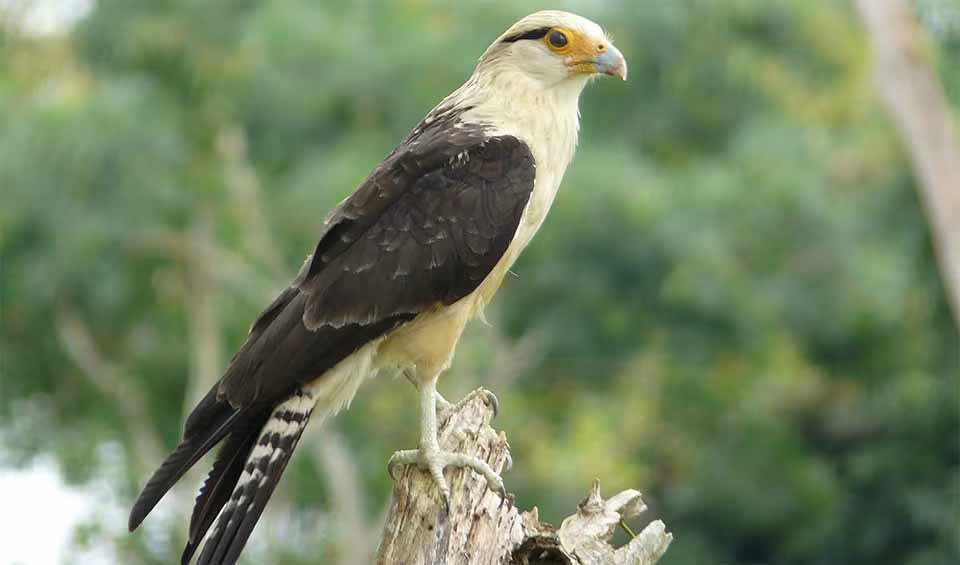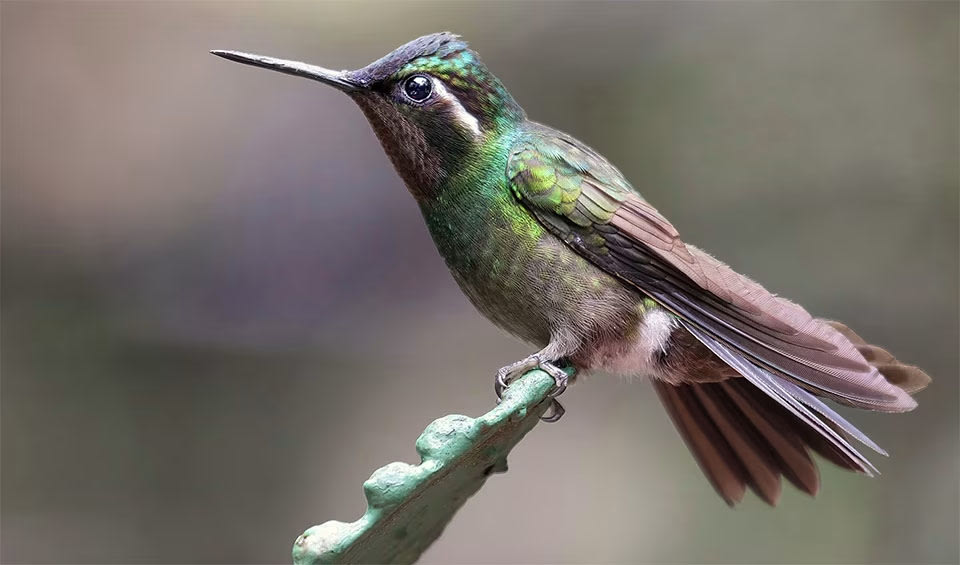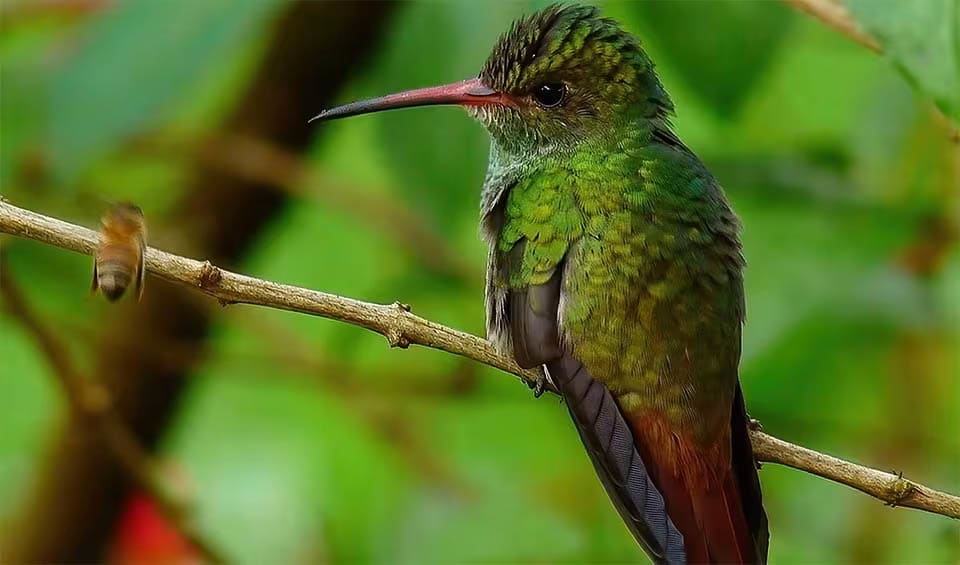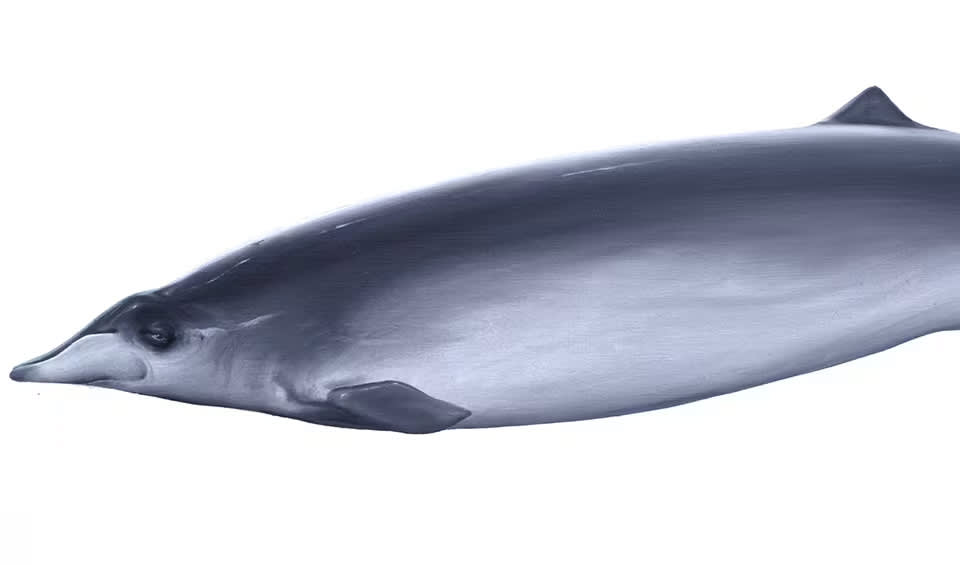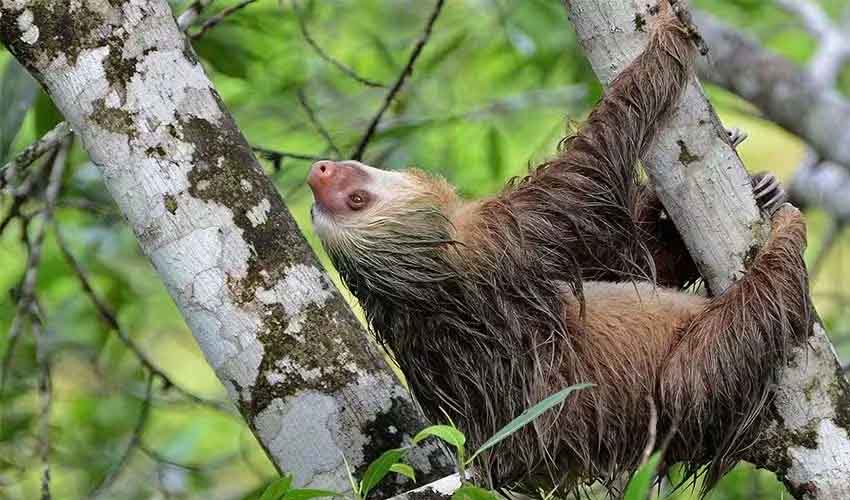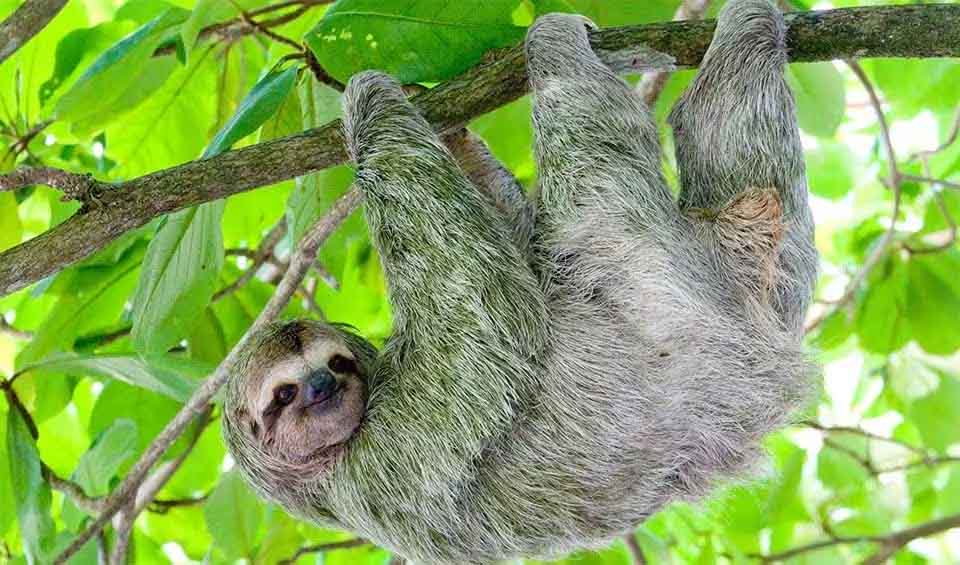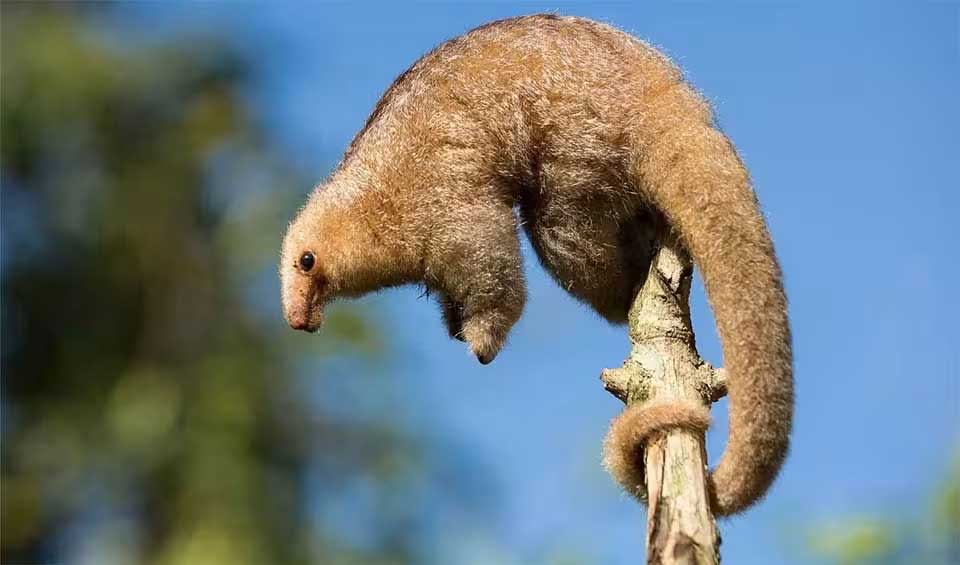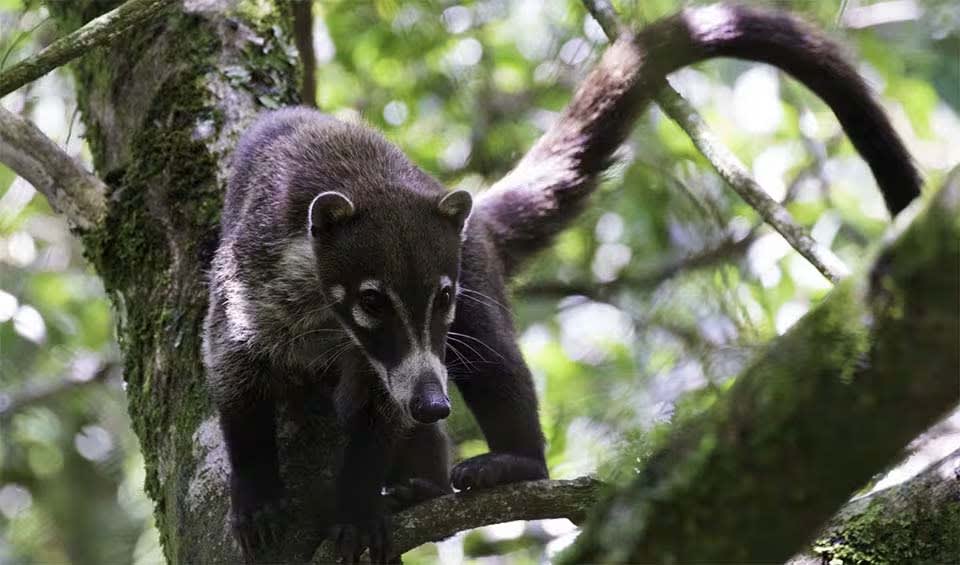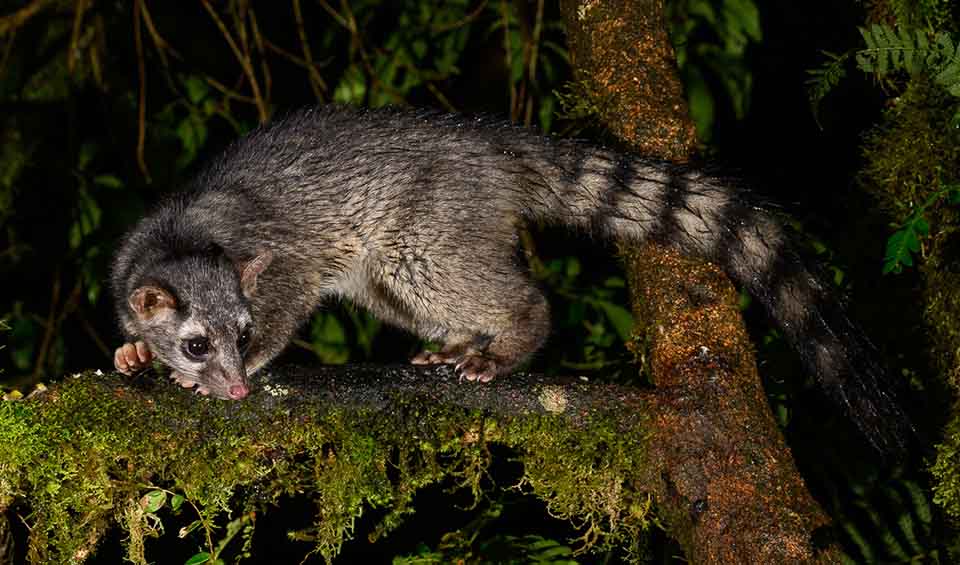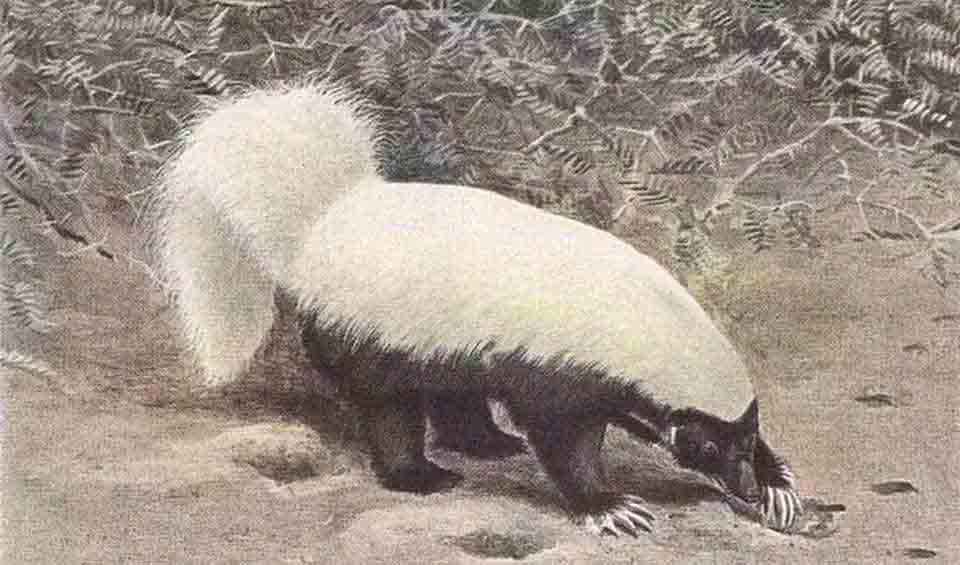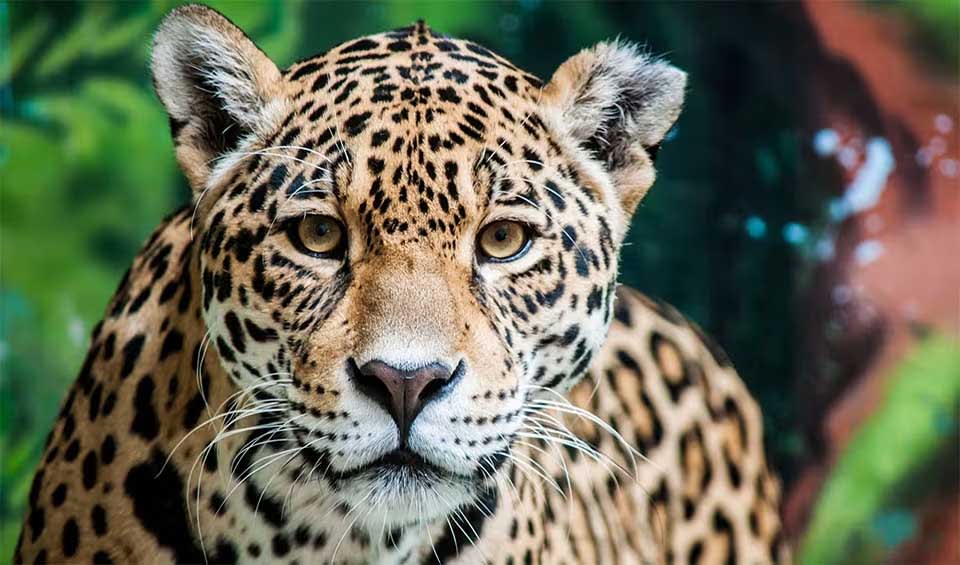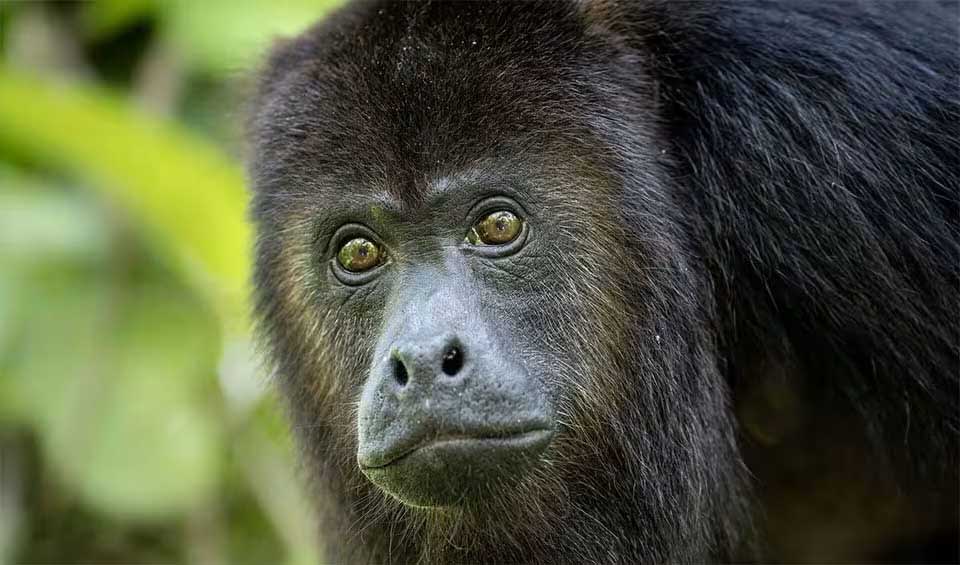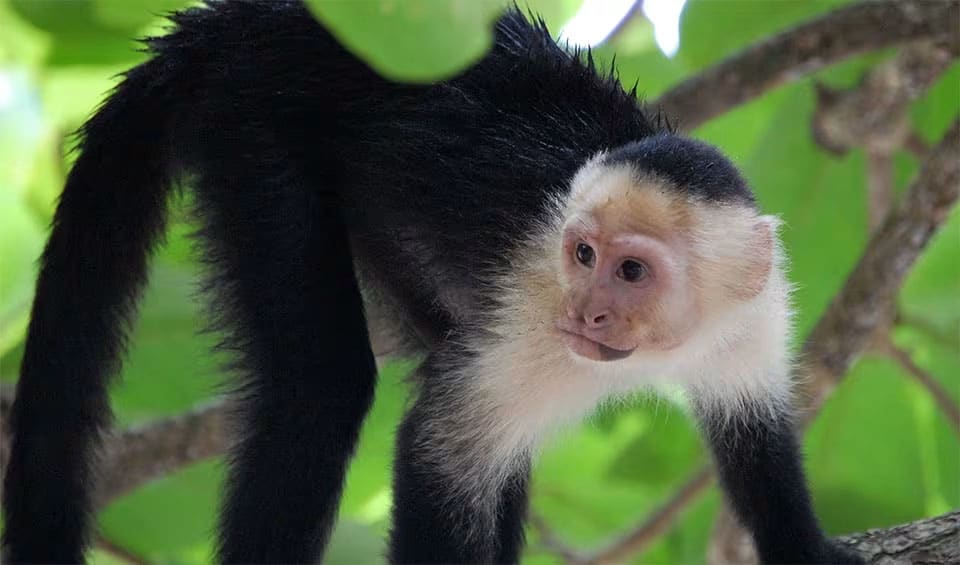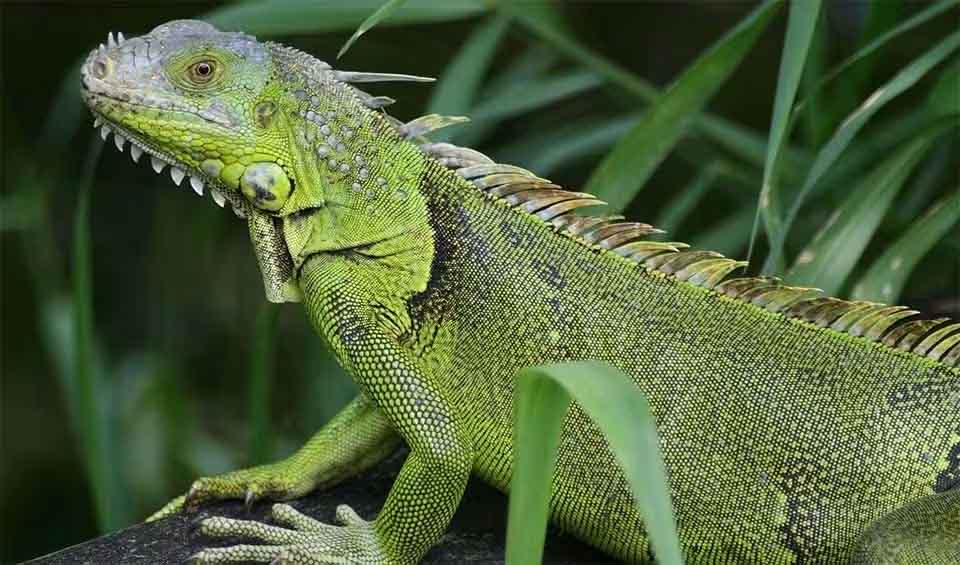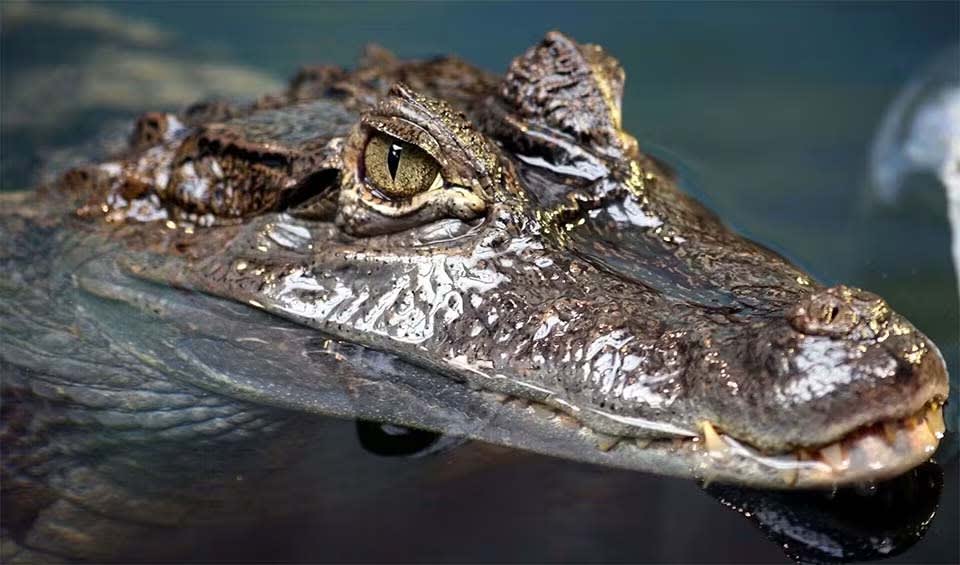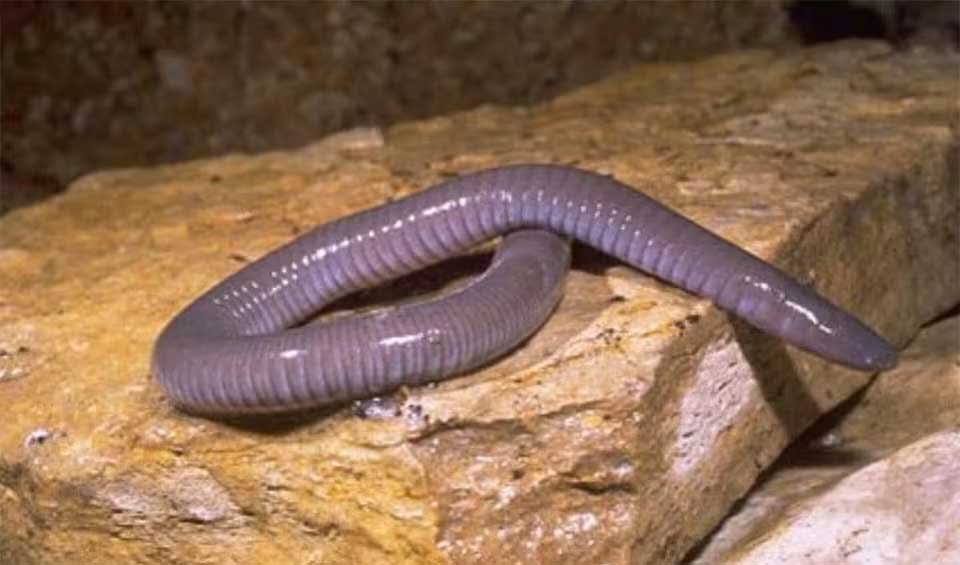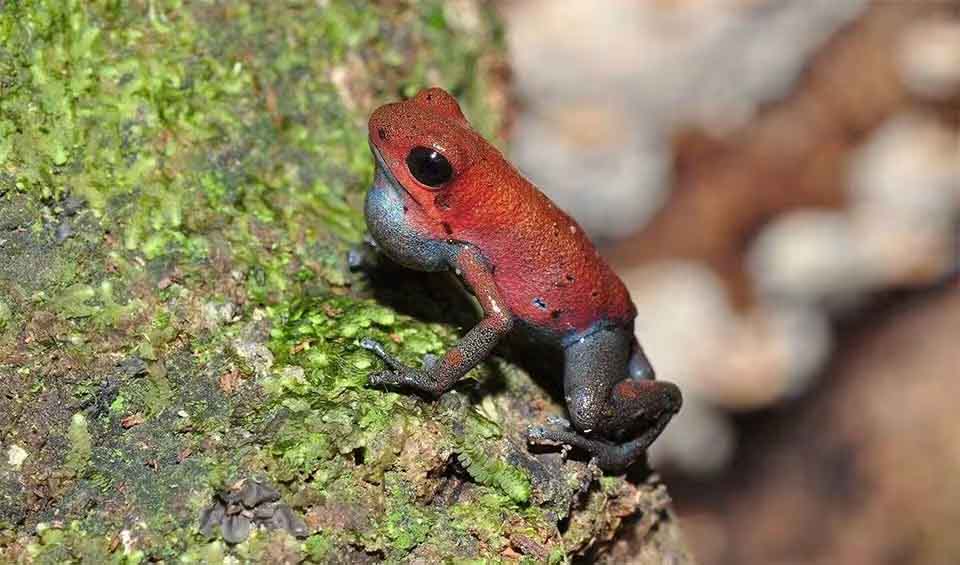Search for Nicaragua
Long-billed hermit
Those “plain” feathers? They’re perfect camouflage for a bird that does most of its business in the shade
Largetooth sawfish
The only sawfish known to spend long stretches of its life in freshwater lakes, not just rivers or coasts
Ruddy ground dove
One of the tiniest doves in the Americas
Green ibis
Sometimes called the “Whispering Ibis”—not because it whispers, but because it’s so quiet and elusive compared to other ibises
Rufescent tiger heron
Doesn’t put its nest near the water’s edge like many of its relatives
Wood stork
The “giant of the swamp”
Green kingfisher
Have eyesight that is exceptionally keen—so much so that they can easily spot tiny fish swimming just beneath rippling water
Giant ameiva
Can move startlingly fast, often vanishing in a blur of motion when startled
Red-footed booby
Goofy-looking yet evolutionarily refined for life above the waves
Common vampire bat
Most famous — and misunderstood — of all vampire bats
Tropical kingbird
Surprisingly aggressive for a bird with a sunny name
Greater sac-winged bat
A scented, singing, socially savvy insect hunter
Turkey vulture
A bird that quietly keeps the environment clean
Amazon kingfisher
Despite its name, it is not limited to the Amazon Basin
Great black hawk
One of the largest hawks in the Americas
Scalloped hammerhead
Their skin actually darkens, just like a sunburn!
Great horned owl
Often called the “tiger of the sky” because of its fierce hunting skills and bold personality
Derby’s woolly opossum
A creature of the night—rarely seen but ecologically important
Northern tamandua
Armed with claws and a tongue longer than its head, it specializes in breaking and entering… ant nests, that is
Ruddy turnstone
They flip the script — literally!
Snowcap
Might visit hundreds of flowers a day to meet its energy needs — it burns calories almost as fast as it consumes them!
Mexican hairy dwarf porcupine
Known for its mix of fuzzy cuteness and prickly defense
Barred forest falcon
The ghost of the rainforest — more often heard than seen
Spectacled owl
Easily recognized by its bold facial markings that resemble a pair of white spectacles
Agami heron
One of the most beautiful and secretive herons in the world
Blunthead tree snake
Looks more like a living vine or a character from a fantasy novel than a typical reptile
Cloudy snail-eating snake
Unlike many snakes that rely on speed or venom, this snake depends on stealth and precision
Common basilisk
Also called the Jesus Christ lizard because of its ability to walk on water
Black-crowned night heron
One of the most widespread and adaptable herons in the world
Yellow-crowned night heron
Crabs make up over 90% of their diet
Great green macaw
A stunning bird dressed in vibrant green and blue, facing dangers from loss of home and unlawful trade
American crocodile
These creatures often ingest stones, aiding food digestion and buoyancy regulation in the water
Laughing gull
Once you’ve heard them laugh, it’s hard to forget!
American kestrel
The smallest of falcons in the entirety of America, but you would be mistaken to take this bird lightly
Cooper’s hawk
With its keen eyesight, or darting through the trees in pursuit of prey, it embodies the precision and power of nature’s predators
Highland eyelash-pitviper
Those ‘eyelashes’ are actually special scales that help them hide in the leaves
Collared aracari
An attractive small toucan found in Mexico, Central, and South America
Terciopelo
One of the most well-known and feared snakes in Central and South America
Boat-billed heron
Got its name from its distinctive, boat-shaped bill, which is wider than it is tall
Honduran white bat
Famous for its snowy white fur, which is a rare sight in the bat world
White-faced whistling duck
Loud birds with a distinct three-note whistling sound
Painted bunting
A tiny bird with colors so bright, it looks like it was painted by an artist
Lineated woodpecker
With its strong, sharp beak, it’s a master at pecking holes into trees to find tasty bugs hiding inside
Brown pelican
The smallest of the eight pelican species
Green jay
Often seen as a symbol of both curiosity and cleverness
Groove-billed ani
Got a long tail, a big head, and a curved bill with little grooves on it – that’s where its name comes from
Wrinkle-faced bat
One of the most unusual-looking bats with lots of funny wrinkles and folds in its face
Barn swallow
Most common and widely distributed swallow globally
Great hammerhead
The biggest of all the hammerhead sharks, with a massive head that looks like a giant, flat hammer
Crested caracara
Got the looks of a hawk with the scavenging habits of a vulture
Yellowfin tuna
Popular food fish, prized for its mild flavor and firm texture
Southern lapwing
Fearless defenders of their nests and chicks, often taking on much larger animals or humans if they perceive a threat
Great kiskadee
This bird is a real chatterbox, constantly announcing its presence with its loud, three-part call – “kis-ka-dee!”
Pantropical spotted dolphin
A champion swimmer and a social butterfly of the warm seas
Brown noddy
They bob their heads up and down as they fly, which is actually how they earned the nickname “Noddy”
Common bottlenose dolphin
Known for their acrobatic leaps, twisting and turning gracefully as they jump completely out of the water
Turquoise-browed motmot
Unlike many other birds that build nests in trees or bushes, they excavate burrows in earthen banks or road cuts
Common dolphin
Often seen riding the bow waves of boats or performing acrobatic leaps out of the water
Tiger shark
They eat almost anything that comes their way – you name it, they’ll try to snack on it!
Geoffroys spider monkey
Hooks for hands…
White-lipped peccary
They can spend up to two-thirds of their day traveling and feeding
Shortfin mako shark
Speed and power embodied, they rule the seas with their sleek bodies and jaw-dropping leaping prowess
Basking shark
Majestic giants of the sea, they peacefully glide through the ocean with mouths agape, filtering the waters for sustenance
Oceanic whitetip shark
Opportunistic predators of the open ocean, their aggressive and persistent feeding behaviour strikes fear into the hearts of their prey
Bull shark
Fearless and formidable, these aggressive predators command respect in the waters they roam
Whale shark
Gentle giants of the sea, with mouths wide open to filter the ocean’s bounty
Great white shark
Majestic ocean predators, embodying power, speed, and precision in their pursuit of prey
Loggerhead sea turtle
One of the largest and strongest sea turtles in the world
Hawksbill sea turtle
Its slender frame and narrow head bear a beak curved like a hawk’s, earning this marine marvel its name
Oncilla
Beneath its fierce exterior lies a tender heart, as it is also known for its loving nature toward its young
Margay
These wild cats are cute, intelligent, agile, and well-adapted to inhabiting tropical and subtropical forests
Central American agouti
This widespread cute-looking creature is also known as the ‘gardener of the forest’
Anhinga
Their neck vertebrae have a hinge mechanism that allows it to dart its long neck and pierce its prey quickly
Long-tailed weasel
Uses a hunting technique known as the Weasel War Dance that involves a series of frenetic turns, manic twists, and jumps to confuse the prey
Resplendent quetzal
This beauty, also known as the “God of the air”, is the national bird of Guatemala and its official currency!
Great Tinamou
A large bird with the tiniest heart and the highest percentage of skeletal muscles used for locomotion
Blue-footed booby
When choosing a mate, foot color is of primary importance as a reliable indicator of health, immunity, and age
Brown booby
An impressively acrobatic bird that can catch flying fish mid-jump
Great frigatebird
These birds spend weeks in the air and hunt, preen and even sleep while in flight
Barn owl
The most cosmopolitan of owls with home ranges extending across the globe
Scarlet macaw
One of the most colorful birds — effortlessly falls in love
Leachs storm petrel
These petrels stylishly ride the ocean waves like they own the winds
Yellow-eared toucanet
One of the smallest toucans that resemble a brightly colored crow rather than a toucan
Keel-billed toucan
The national bird of Belize, this majestic bird will make your head turn
Yellow-throated toucan
Formerly known as Yellow fronted toucan; formerly-formerly known as Chestnut-mandibled toucan
Red-billed tropicbird
Professional marine forecasters to optimize breeding success and prey availability
Roseate spoonbill
An easily recognizable bird due to its pink body and spatulate bill
White ibis
Very good at detecting storms, often the last to leave and first to arrive before and after a hurricane
House sparrow
The most widely dispersed wild bird
Scarlet flycatcher
The scarlet ambush hunter
Limpkin
They don’t need salt, bamboo sticks, or forks to deshell a snail – they have a well-adapted bill to do the job
Great curassow
The only massive and heaviest species of its family living in Neotropical rain forests that is easily vulnerable to hurricanes
Yellow-headed caracara
A common scavenger bird that cleans up the roads of Central and South America
Red-throated caracara
The largest species of the three species present in the Amazon
Peregrine falcon
At the speed of over 321 km/h (200 mph), this bird outraces a Formula1 car
Sunbittern
The sole member of its entire family and the closest living relative to the Kagu
Rufous motmot
Second-largest and the most spectacular bird of the family
Jabiru
One of the tallest flying birds of Americas
Black-winged stilt
Elegant long-legged wader, common almost worldwide
Common tern
This bird holds the record of the longest distance flown by any bird in recorded history
Northern jacana
This mysterious bird which can walk on water
King vulture
The most colorful vulture, with the orange cruncle
Great potoo
These nocturnal birds live in solitary and can peek around even with closed eyes
Purple-throated mountain-gem
One of the living jewels found in the humid mountains of Central America
Rufous-tailed hummingbird
Like many of us, this bird loves coffee and feeds on its flowers
Mallard
This invasive species is the ancestor to most of the modern ducks
Harpy eagle
The world’s most spectacular and most robust eagle species serves a critical ecological role in the ecosystem they live in
Red-tailed hawk
One of the most common raptors across North America
Osprey
One of only six land-birds with a cosmopolitan distribution habituating all continents except Antarctica
Pygmy beaked whale
The most recently described and smallest member of toothed whales –it was only classified as a distinct species in 1991
Hoffmann’s two-toed sloth
Can camouflage itself in trees with the help of algae growth on fur
Brown-throated sloth
Cute but lazy species harmlessly sleep in the trees for 14 to 16 hours a day
Giant anteater
These specialist predators of termites and ants are not immune to ant bites
Silky anteater
Also known as pygmy anteater, they are the smallest and most adorable of their insect-eating kind
Bairds tapir
The largest land mammal native to Central and South America
Nine-banded armadillo
Found all over the Americas, it is the most widespread species of all armadillos
Virginia opossum
“Play possum” when being attacked by remaining still, having the tongue hangs out, and do not blink, making the predator to lost interest
Raccoon
‘Raccoon’ comes from ‘arakun’ meaning ‘he scratches with hands’ in Algonquin Indian
White-nosed coati
Helps balsa trees to pollinate while they provide an essential resource of nutrition and hydration in return when the resources are scarce
Northern olingo
One of the most effective seed-dispersing mammals
Kinkajou
Has a spooky nickname, “La Llorona” meaning crying woman in Spanish due to their noisy barks, hisses, and high-pitched squeaks
Cacomistle
The common name “Cacomistle” means “half mountain lion” or “half cat” in the Nahuatl language, but they are relatives of raccoons
Southern spotted skunk
Stand on the front paws when being threatened, balancing with tail and body straight up, and sometimes charge towards predator while upside down
American hog-nosed skunk
When they encounter a threat, the first resort is to run to a safe area rather than spraying at the enemy
Tayra
Widespread in tropical and subtropical forests Central and South America
Greater grison
When they move cautiously, they press their body close to the ground and move in a zigzag pattern like a snake
Cougar
The most widespread large mammal of the Americas: from Canada’s Yukon to the Andes in South America
Jaguarundi
Secretive and solitary, inhabiting various habitats of Central and South America
Ocelot
They are picky eaters, often plucking off all the furs or feathers of the prey before start eating them
Jaguar
This solitary cat is America’s largest feline and the world’s third, after the tiger and the lion
Gray fox
While still widespread throughout North & Central America, habitat loss and deforestation allowed the red fox to become more dominant
Coyote
They can even sometimes reproduce in huge numbers, which becomes necessary to be regulated as they also carry many diseases, including rabies.
White-tailed deer
We use our agility and speed to outrun their predators, sprinting up to 48.2km/h (30 mph) and leaping as high as 3m (10 ft)
Collared peccary
Suffering from poorly developed vision, they heavily rely on vocalization to communicate
Mantled howler
One of the loudest monkeys in the world!
White-faced capuchin
One of Central America’s famous monkeys can easily live up to 50 years
Leatherback sea turtle
The mysterious diver of the ocean is the largest and only sea turtle without a hard shell and scales
Black wood turtle
The largest of all wood turtles
Green iguana
From the US down to Brazil, this trans-American lizard is the most common iguana
Spectacled caiman
You might get the worst scare of your life if you see the crimson glow in the eyes of these creatures at night
Mexican burrowing caecilian
The shy caecilian is an excellent burrower with a sleek, eel-like body and beady eyes
Red-eyed tree frog
A charismatic frog is known for its beauty which can often be seen on all sorts of artwork throughout the world
Strawberry poison dart frog
Don’t mistake this creature for a juicy strawberry, as this is the most toxic member of its genus
Cane toad
When a big one meets a smaller one, it’s lunch!




